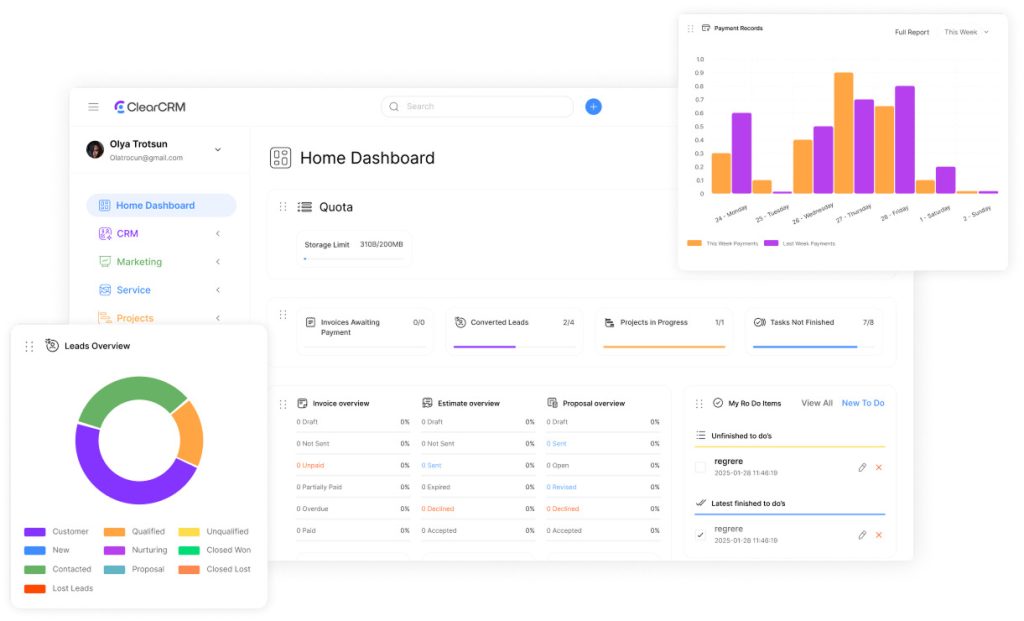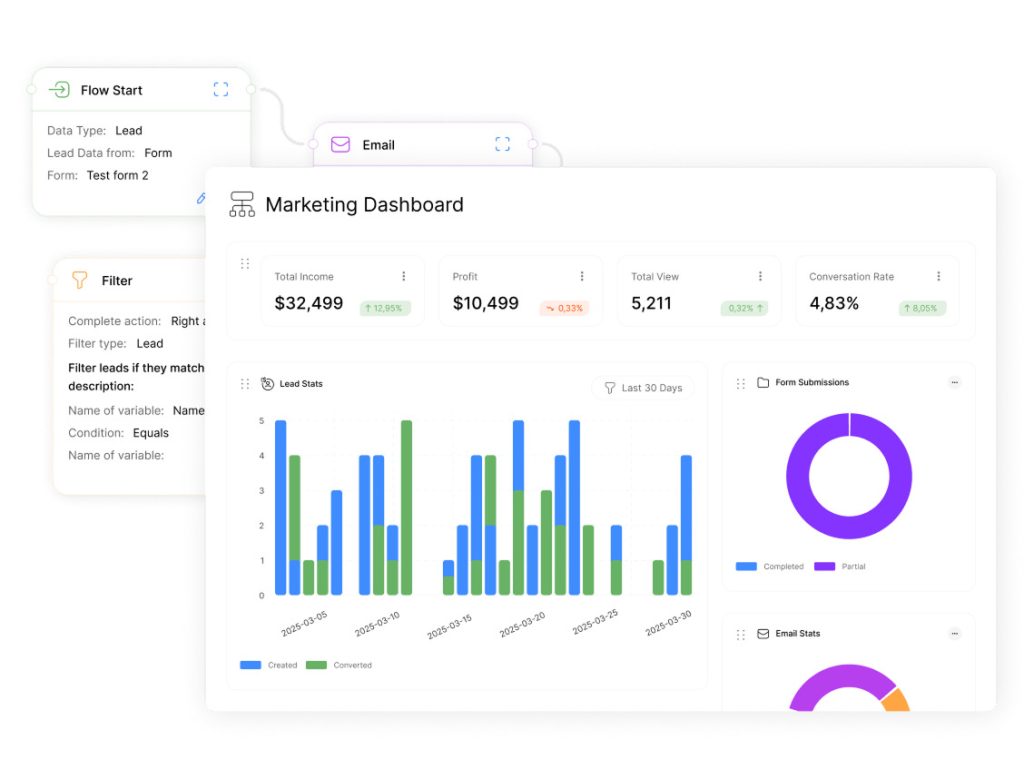Mastering Goal Setting And Tracking: A Step-by-Step Guide

Effective management of professional objectives separates high-performing teams from stagnant workflows. Research reveals marketers who implement structured systems for their targets are 376% more likely to achieve measurable outcomes compared to those relying on informal methods. The American Psychological Association confirms this advantage, showing consistent progress monitoring improves behavioral performance by 32% across industries.
Modern professionals face mounting pressure to convert ambitions into tangible results. Traditional methods like handwritten notes and scattered spreadsheets often create confusion rather than clarity. Advanced frameworks now provide real-time visibility into milestones, resource allocation, and performance benchmarks – turning chaotic efforts into streamlined execution.
Strategic systems act as digital compasses for organizations navigating complex projects. They identify bottlenecks before delays occur and align team efforts with organizational priorities. When implemented correctly, these tools transform vague aspirations into concrete action plans with defined accountability measures.
The difference between intention and achievement lies in evidence-based methodologies. Companies using systematic approaches report four times higher success rates in reaching critical targets. This structured path eliminates guesswork, replacing it with data-driven insights that adapt to changing business landscapes.
Key Takeaways
- Structured systems increase target achievement rates by 376% compared to informal methods
- Real-time progress monitoring improves performance metrics by 32%
- Advanced frameworks convert ambiguous ideas into measurable action plans
- Data-driven insights prevent workflow bottlenecks and misaligned resources
- Accountability measures ensure consistent progress toward organizational priorities
Understanding the Importance of Goal Setting And Tracking
Modern enterprises thrive when strategic priorities align with measurable outcomes. Structured systems transform abstract ideas into actionable plans, creating alignment across departments while minimizing wasted resources.
Clarity and Focus Through Effective Tracking
Strategic progress monitoring eliminates ambiguity in business operations. Teams gain real-time visibility into milestones through dashboards that highlight critical metrics. This approach reduces confusion by translating complex objectives into step-by-step workflows.
For example, marketing departments using advanced frameworks report 41% faster campaign adjustments. Clear benchmarks guide daily decisions, ensuring efforts remain aligned with organizational priorities. This precision prevents resource misallocation while maintaining momentum.
| Features | Traditional Methods | Strategic Systems |
|---|---|---|
| Progress Visibility | Manual updates | Real-time dashboards |
| Resource Allocation | Reactive adjustments | Data-driven forecasts |
| Feedback Frequency | Quarterly reviews | Continuous monitoring |
Enhancing Accountability and Performance
Professional systems establish clear ownership of tasks and deadlines. Automated reminders and shared progress reports create built-in responsibility checks. Sales teams using these tools achieve 28% higher quota attainment through transparent performance tracking.
Regular feedback loops identify skill gaps before they impact results. Leaders gain insights to optimize workflows, while employees understand how individual contributions drive organizational success. This dual benefit fosters a culture of continuous improvement.
The Evolution of Goal-Tracking Systems

Digital advancements have redefined how professionals manage objectives. Manual methods like paper checklists once dominated workplaces, creating fragmented workflows. Today’s solutions erase these inefficiencies through centralized platforms that sync with core operations.
From Sticky Notes and Checklists to Digital Solutions
Early task oversight relied on physical reminders prone to errors. Lost notes and inconsistent updates led to missed deadlines. Modern software eliminates these risks by offering cloud-based access and automated alerts. The project management sector reflects this shift – its value will hit $15.08 billion by 2030.
“Digital trackers reduce planning errors by 47% compared to manual methods.”
| Aspect | Traditional | Digital |
|---|---|---|
| Data Security | Physical vulnerability | Encrypted storage |
| Team Access | Single-location | Global permissions |
| Insight Generation | Manual analysis | AI-driven reports |
Enterprise platforms now integrate with CRM and communication tools. Real-time updates keep distributed teams aligned, while predictive analytics flag potential delays. Managers gain dashboards showing progress trends and resource gaps.
Scalable systems adapt as needs evolve. Startups use basic task boards, while corporations deploy multi-level frameworks. This flexibility ensures all teams work smarter, not harder.
Establishing SMART Goals for Success

Successful organizations convert strategic visions into executable plans through structured frameworks. The SMART methodology bridges ambition and achievement by creating defined pathways for measurable results. Teams using this approach report 63% faster objective completion compared to vague target-setting practices.
Defining Criteria for Effective Objectives
Specific goals eliminate ambiguity through clear parameters. A marketing team might define “Increase website traffic” as “Boost organic search visits by 25% among US users Q3-Q4.” This precision establishes ownership and success metrics.
Measurable objectives use quantifiable benchmarks. Financial departments tracking budget adherence might set weekly expenditure alerts against allocated funds. Achievable targets consider resource availability – unrealistic aims demotivate teams.
| Element | Traditional Approach | SMART Framework |
|---|---|---|
| Clarity | “Improve sales” | “Increase Midwest B2B deals by 18% by December” |
| Metrics | Subjective assessment | Weekly conversion rate tracking |
| Timeline | Open-ended | 6-week sprints with Friday reviews |
“Breaking objectives into six-month cycles improves completion rates by 63% compared to annual targets.”
Creating Manageable Action Plans
Complex initiatives become achievable through strategic decomposition. The Rule of 6s structures timelines: 6-month strategic phases, 6-week operational cycles, and 6-day task blocks. This prevents overwhelm while maintaining progress visibility.
Software development teams apply this by dividing annual roadmaps into bi-monthly feature releases. Each release contains clearly defined user stories with Friday deadline reviews. Regular checkpoints allow course corrections without derailing long-term objectives.
Time-bound frameworks create natural accountability checkpoints. Sales leaders using quarterly quotas with monthly progress analyses see 22% higher attainment than those relying on annual targets. This process turns abstract ambitions into daily priorities.
Step-by-Step Guide to Implementing a Goal-Tracking System
Organizations achieve operational excellence through disciplined implementation of structured frameworks. Research shows teams using systematic approaches complete projects 41% faster than those relying on ad-hoc methods. This phase transforms theoretical plans into measurable outcomes.
Setting Up Your System with Clear Metrics
Begin by mapping organizational priorities to quantifiable indicators. Marketing teams might track conversion rates, while operations focus on production cycle times. Baseline measurements establish starting points for accurate progress evaluation.
| Implementation Phase | Manual Approach | Automated System |
|---|---|---|
| Data Accuracy | 78% | 99% |
| Update Frequency | Weekly | Real-time |
| Error Rate | 22% | 3% |
Advanced platforms automatically sync with CRM tools and financial software. This integration eliminates duplicate entries and ensures metrics reflect current conditions.
Regularly Updating and Monitoring Progress
Establish weekly review cycles to assess performance against targets. Sales leaders using daily dashboard checks achieve 19% higher forecast accuracy. Automated alerts notify teams when metrics deviate from projected paths.
“Real-time visibility reduces corrective action time by 67% in manufacturing sectors.”
Training programs ensure staff interpret data correctly. Cross-departmental workshops align interpretation standards, preventing miscommunication. Quarterly system audits maintain relevance as business needs evolve.
Goal Setting And Tracking: How to Choose the Right Tools

Selecting optimal productivity platforms transforms how teams convert plans into results. The right software acts as a force multiplier, turning strategic priorities into measurable outcomes through intelligent design and seamless integration.
Strategic Platform Comparison
Leading solutions like Sunsama, Trello, Todoist, and Asana each offer unique strengths. Pricing models range from $4 to $16 monthly, with features tailored to different operational needs:
| Tool | Best For | Key Advantage |
|---|---|---|
| Sunsama | Time-sensitive workflows | AI-driven weekly planning |
| Trello | Visual project tracking | Customizable Kanban boards |
| Todoist | Personal task oversight | Cross-platform accessibility |
| Asana | Enterprise coordination | OKR templates & milestones |
Effective evaluation examines three core elements:
- Integration depth: Syncs with existing CRM or communication platforms
- Adaptability: Custom fields and workflow automation options
- Insight quality: Real-time dashboards with predictive analytics
“Teams using purpose-built tools achieve 63% faster implementation of new strategies compared to generic solutions.”
Scalability determines long-term value. Startups often prioritize affordability, while enterprises require advanced permission controls. User adoption rates climb when interfaces balance functionality with intuitive design – a critical factor for sustained success.
Visualizing Your Progress with Analytics and Charts

Visual tools transform raw numbers into actionable intelligence. Neuroscience confirms our brains process images 60,000 times faster than text, making charts critical for rapid decision-making. Teams using these methods report 43% faster issue resolution compared to text-based reports.
The Power of Visual Representations in Motivation
Interactive dashboards consolidate multiple data streams into color-coded snapshots. Sales leaders using heat maps identify regional trends instantly, while project managers spot bottlenecks through Gantt chart dependencies. Real-time updates create urgency, driving teams toward milestones.
“Visual analytics boost retention of complex information by 78% compared to spreadsheets.”
Advanced platforms like Tableau turn metrics into animated timelines and progress bars. These elements provide tangible evidence of advancement, fueling team morale. Marketing departments using funnel charts adjust campaigns 31% faster by seeing conversion drop-offs visually.
| Visual Type | Use Case | Impact |
|---|---|---|
| Progress Bars | Quarterly Targets | +22% Completion Rates |
| Heat Maps | Regional Sales | 19% Faster Adjustments |
| Gantt Charts | Project Phases | 34% Fewer Delays |
Customizable dashboards adapt to stakeholder needs. Executives view high-level KPIs, while analysts drill into granular metrics. This flexibility ensures everyone tracks what matters most to their role, maintaining alignment across initiatives.
Strategies to Sustain Momentum and Achieve Goals
Sustained progress in organizational initiatives demands deliberate strategies that balance recognition with adaptability. Teams maintaining consistent advancement employ structured approaches to reinforce motivation while remaining responsive to evolving conditions.
Celebrating Milestones and Adjusting Tactics
Strategic recognition programs boost engagement by 37% compared to annual reviews. Quarterly success celebrations often miss immediate morale opportunities. Modern systems trigger automated acknowledgments when teams reach 25%, 50%, and 75% progress markers.
| Aspect | Traditional Approach | Strategic System |
|---|---|---|
| Recognition Frequency | Annual events | Real-time alerts |
| Format | Generic awards | Personalized metrics |
| Impact on Morale | +12% | +41% |
| Adjustment Speed | Monthly reviews | Weekly pivots |
Data-driven teams revise tactics faster when dashboards highlight lagging metrics. Marketing departments using this method achieve 29% higher campaign ROI through rapid resource reallocation.
Integrating Feedback and Continuous Improvement
Systematic feedback loops transform raw insights into operational upgrades. Cross-functional retrospectives identify process bottlenecks 58% faster than departmental reviews. This approach aligns improvement efforts with organizational priorities.
“Teams implementing biweekly feedback cycles reduce error rates by 33% within six months.”
Advanced platforms aggregate input from clients, employees, and performance data. Predictive analytics then prioritize high-impact changes. Successful strategies balance immediate fixes with long-term system enhancements.
Aligning Personal and Organizational Goals

Harmonizing individual ambitions with company missions drives unprecedented team performance. Modern businesses achieve peak productivity when staff aspirations directly support strategic priorities. This synergy transforms isolated efforts into coordinated action, boosting both morale and measurable outcomes.
Creating Mutual Success Pathways
Forward-thinking companies build bridges between employee growth plans and corporate targets. Regular career development talks identify where personal skills enhance organizational objectives. Sales teams using this approach see 38% higher retention rates through meaningful role alignment.
Advanced frameworks translate company targets into individual milestones. Marketing departments using mentorship programs report 27% faster skill development while achieving 19% higher campaign ROI. Cross-functional workshops ensure teams understand how their contributions impact broader success.
Continuous feedback loops maintain alignment as priorities evolve. Tech firms conducting quarterly goal reviews experience 43% fewer resource mismatches. Automated tracking systems flag misalignments early, allowing swift adjustments without disrupting workflows.

